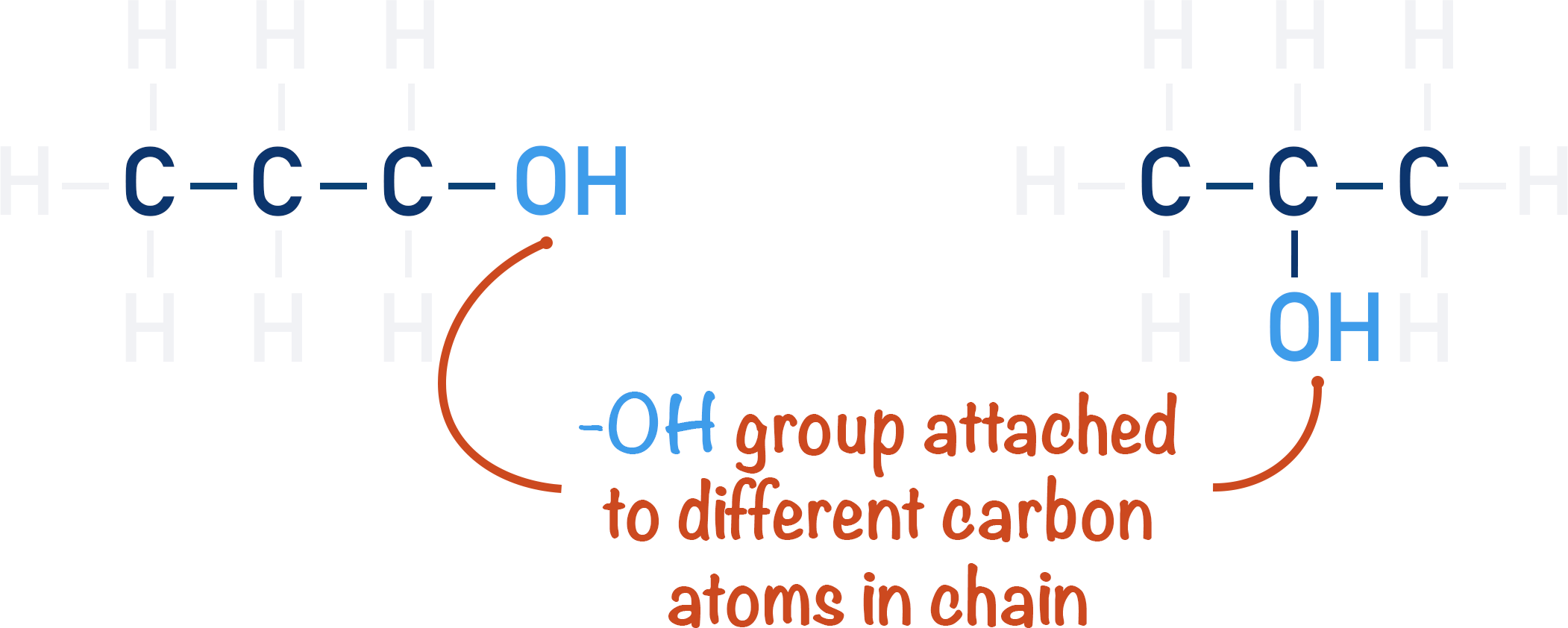Quick Notes Structural Isomerism
- Molecules that have the same molecular formula but different structures are called structural isomers.
- Chain isomers have different carbon chain arrangements to one another.
- Positional isomers have a functional group in different positions on their carbon chains.
Full Notes Structural Isomerism
Organic molecules can have the same number of atoms as one another, but they can be arranged differently. This means molecules can share the same molecular formula, but have different structural formulas. When this happens, they are described as being structural isomers. For more advanced isomerism, see Alkenes and Optical Isomerism.
Chain Isomerism
If we take the molecular formula C4H10, there are two possible molecular structures.

Here, the molecule’s carbon chain has been changed between isomers, so it’s an example of chain isomerism.
Positional Isomerism
Let’s look at propanol, C3H8O. We have a three-carbon chain, but there are two possible structures as the –OH alcohol group can bond to two different carbons (the ‘middle’ carbon atom or either ‘end’ carbon atom, as this would have the same structure).

In this case, the difference between molecules is the position of the alcohol group, so it’s an example of positional isomerism.
